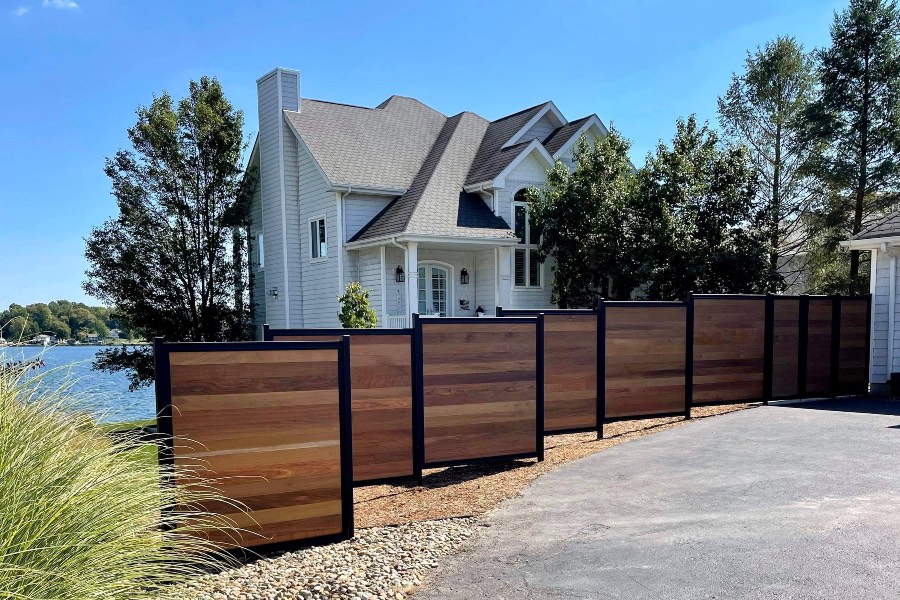All Categories
Featured

When thinking about setting up a fencing on your property, among the most vital steps is to comprehend whether you require a permit. Fence installments frequently need a permit to guarantee that the structure abides by regional zoning regulations, constructing codes, and safety and security requirements. The certain permits needed can differ depending upon your area, the kind of fencing you intend to install, and the height or positioning of the fencing. Right here's a guide to help you navigate the process of obtaining a fencing authorization and make certain that your installation is legal and hassle-free.
Why You Required a License for a Fence Installation. A fence license is required to make certain that the installment satisfies regional laws. The authorization process assists neighborhood authorities confirm that your fence does not conflict with website traffic visibility, respect your residential property lines, or violate elevation restrictions. It also makes certain the safety and security of the framework, so it does not position a danger to you, your neighbors, or the general public. Setting up a fencing without a license can cause fines, removal of the fencing, or delays in construction, so it's vital to inspect whether an authorization is required before starting your job.
Kinds Of Authorizations You Might Need. There are a few common sorts of authorizations you could require for a fence installation:
Structure Permit. A building permit is one of the most typical authorization required for fence installments. This permit makes sure that the fencing fulfills safety standards and is constructed according to neighborhood building ordinance. A building authorization is commonly needed if the fencing goes beyond a certain height (typically 6 feet), is made of particular materials, or is situated near a public pathway or roadway.
Zoning Permit. A zoning license may be called for to confirm that your fence follows neighborhood zoning laws. Zoning laws can dictate where a fence can be positioned on your property, exactly how high it can be, and whether it is allowed specific locations (such as along home lines or ahead backyards) Some towns have laws limiting the height of fences in the front backyard to ensure visibility for pedestrians and chauffeurs.

Trouble Permit. You may need an obstacle permit if you are developing a fencing near your residential or commercial property line or close to a street. An obstacle describes the distance a structure, including fencings, need to be from the building line. Setback laws differ by place, and making sure that your fence is put properly can avoid problems with next-door neighbors and stay clear of offenses.
House Owner Organization (HOA) Authorization. If you live in an area governed by a Home owner's Association (HOA), you may require authorization from them in enhancement to neighborhood licenses. HOA policies usually cover the type of products, elevation, design, and color of fencings. Even if your city government doesn't need a permit, your HOA might still have certain standards that require to be complied with.
Exactly How to Request a Fence Permit. To apply for a fencing license, you'll require to call your regional building department or preparation workplace. The application procedure commonly includes completing a kind, paying a cost, and submitting a website plan of your residential or commercial property that reveals the recommended place of the fence. You might additionally require to consist of details concerning the products, height, and layout of the fencing.
In many cases, a local authorities may require to evaluate your residential or commercial property prior to approving the authorization. As soon as the authorization is given, you will certainly be authorized to wage your fencing setup.
When Is a Permit Not Needed? In particular circumstances, a permit might not be required. These circumstances can include:
Low Height Fences: In numerous locations, fences that are listed below a certain elevation (typically 3 to 4 feet) might not require a permit, especially if they are placed in the backyard or other non-visible locations.
Fence Replacement: If you're replacing an existing fencing with the same height and product, some areas might not need a brand-new license.
Non-Obtrusive Fencings: Ornamental or short-lived fencings, such as those made use of for horticulture or landscape design functions, might not require permits as long as they are not irreversible and reduced.
However, it is necessary to consult your local zoning workplace or building department, as regulations can differ by territory.
Consequences of Not Getting a Permit. Failing to get the essential licenses can lead to significant repercussions. These consist of penalties, required removal of the fencing, and even hold-ups in construction. In addition, if your fencing doesn't satisfy neighborhood regulations, you can face lawful problems with next-door neighbors or local authorities.

Final thought. By making certain that you adhere to local guidelines and obtain the essential licenses, you can avoid costly errors and guarantee that your fence is legitimately compliant. Check with your local building division, HOA, and zoning office to identify what permits are required for your details fencing job.
Latest Posts
Find Budget-Friendly Auto Repairs with Montclare’s Monthly Service Specials
Published May 28, 25
1 min read
Explore Auto Services & More: Comprehensive Auto Care Solutions from Montclare Auto Repair
Published May 27, 25
1 min read
Explore the Premier Auto Repair Deals in Montclare, Chicago
Published May 26, 25
1 min read
More
Latest Posts
Find Budget-Friendly Auto Repairs with Montclare’s Monthly Service Specials
Published May 28, 25
1 min read
Explore Auto Services & More: Comprehensive Auto Care Solutions from Montclare Auto Repair
Published May 27, 25
1 min read
Explore the Premier Auto Repair Deals in Montclare, Chicago
Published May 26, 25
1 min read